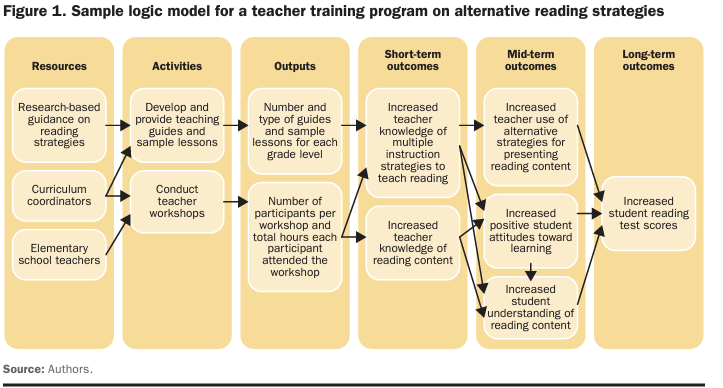Community Building
3 Benefits of Impact Measurement for Nonprofits
In 2021, my colleague and I combined qualitative and qualitative data to advocate for continued funding from Massachusetts philanthropies and government entities. These data sets highlighted 2 key elements: feedback from early education (pre-k) provider focus groups, and survey data from providers.
We were advocating for a continuation of American Rescue Plan (ARPA) funding that was providing critical funding to thousands of early education providers during the pandemic, facilitated by the Massachusetts Department of Early Education and Care.
By showcasing the quantitative impact of the funding, in addition to adding quotes and stories from the focus groups, we made a compelling case that funding should be continued–and ultimately it was successful.
I have seen firsthand the difference that proper impact measurement and management can have for nonprofits, and I am confident your nonprofit will benefit from collecting data to make a difference, too! In this article, I’ll delve into the importance of impact measurement for nonprofits, as well as explore the three benefits it can have at your organization.
What Is Impact Measurement & Management (IMM)?
At its core, impact measurement for nonprofits can improve decision-making. It is the process of collecting, analyzing, and communicating data about an organization’s services to understand the effects their actions are having, or not having, on the people or community that they are serving. More than just a process, it is a mindset for how to consistently engage with those you serve and using feedback to improve programs.
Impact measurement and management can look different for each nonprofit depending on resources. Larger nonprofits might have more robust impact measurement and management teams, whereas others might embed these responsibilities into one role. Whatever it looks like for your organization it is completely fine–as long as the overall principles and best practices are in place.
Typically impact measurement evaluates a few key components:
-
- Inputs: Resources, such as staff time
-
- Activities: What the organization does
-
- Outputs: Evidence that the activities were performed
-
- Outcomes: Short-term or long-term impacts or changes as a result of the activities. (e.g. increased self-esteem among youth or improved job retention within a marginalized population.
Overall, outcomes should connect with your organization’s overarching mission or purpose for existing. Tools and frameworks such as logic models, a theory of change, and “if-then statements” can help bring these concepts to life. Check out the example logic model below, and SureImpact’s Ebook “How to Demystify Data and Create an Impact-Centric Social-Sector Organization.”

Source: Institute of Education Sciences
Outcomes-based impact data is the gold standard. Many nonprofits are measuring at the “output level.” That is fine, but moving toward outcome measurement is even more powerful.
Why Is IMM Critical For Nonprofits?
A common saying among impact professionals is, “if you’re not measuring your impact, you don’t know if you’re having one.” As much as nonprofits want to think they are having a positive impact, without measuring it you have no insight into how much impact, which services are driving the impact, and who specifically is being impacted.
Many nonprofits are already taking steps to improve the outcomes of the people they serve. According to the Stanford Social Innovation Review (SSIR), in 2013, “75 percent of charities measured some or all of their work, and nearly three-quarters have invested more in measuring results over the last five years.”
Specifically, there are three main ways that impact measurement can help your organization meet its goals. Let’s check them out:
3 Benefits of Impact Measurement for Nonprofits
1. Improve Services To Have A Greater Impact
Hearing directly from the individuals you serve can help you understand your organization’s strengths and gaps, ultimately allowing you to better meet their needs. For example, at a previous organization I worked for, we conducted 1-on-1 interviews with individuals receiving publicly funded mental health services. A recurring theme was how important it was for them to build community, but how difficult it was to make genuine connections during COVID-19.
After interviewing over 80 individuals and hearing similar themes, we recommended that the public mental health department begin to track and measure the degree of social connectedness. They began to do this using an evidence-based questionnaire, and incorporated 3 new questions on a Likert Scale into their quarterly check-in with the recipients.
Social connectedness is a key element of human wellbeing and recovery, which was why it was important for the mental health department to measure it. The goal was that by having more data on how their recipients were feeling in this domain, it allowed caseworkers to better support clients by connecting them with community events and fostering social bonds.
Having this data can help organizations understand what their clients need, and they can strategically direct resources where they are needed most.
2. Enhance Fundraising Efforts
Institutional donors are increasingly looking for evidence of impact when making funding decisions. Donors want to ensure that their funds are being directed toward the programs that are having the greatest impact on constituents. This is not to say that a program’s overhead shouldn’t be included in grants, but it does mean that funds earmarked for programs should be able to see the results of those funds.
For individual donors, research from the Generational Giving Report, Volume 2 shows that individuals of all ages have stopped donating to nonprofits in the past because they didn’t feel as though their donation was making a difference. Measuring and communicating the impact your organization has achieved (moving beyond outputs and to outcomes) can help prevent this, and support donor retention efforts.
Moreover, measuring impact over the long-term and transparently sharing those results can build trust with donors. Even if the results were mixed, presenting a plan for improvement shows accountability and fosters long-term relationships.
3. Create Accountability For Nonprofits To Ensure Results Are Coming From Donations
Although it’s hard to consider, sometimes evaluations reveal your services are not having the desired impact. While disappointing, this insight is crucial, particularly when nonprofits are doing it for the first time. Digging into the data can often yield where your nonprofit is missing the mark, and that is exactly where you should focus your resources.
The goal is to foster a culture of continuous improvement, where feedback and data drive better outcomes for the people you’re serving.
Where are you in your impact measurement journey? Check out these resources to help you achieve better outcomes for the people you serve today!
-
- Watch: Measuring Success: Data-Driven Storytelling for Nonprofits, featuring MemoryFox & SureImpact

About the Author
Tasha Cornell-Roberts
Marketing Intern, MemoryFox
Tasha has worked in the nonprofit sector for 9 years. She has previously held positions at nonprofits such as Oxfam, Kiva and Third Sector, supporting impactful organizations both nationally and internationally outside of the U.S. She brings functional experience in fundraising, stakeholder engagement, consulting, and building cross-sector partnerships between government agencies and community-based organizations. She has experience across issues areas such as microfinance, gender equality, behavioral health, and early childhood education. She believes that authentically connecting with individuals and hearing their stories is one of the best ways to measure impact and promote change.




